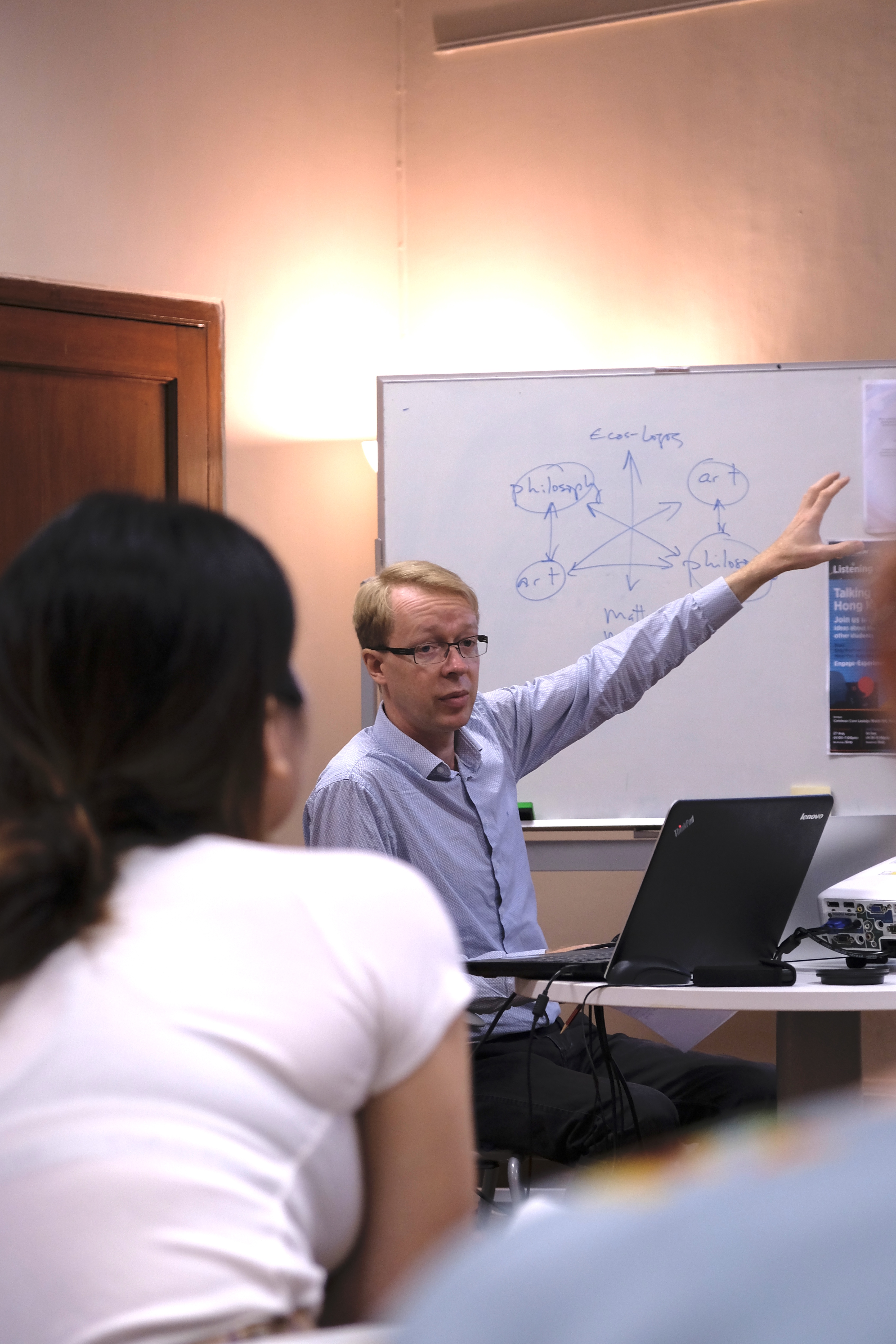
Rick Dolphijn, associate professor at Utrecht University, and Lucas van der Velden, director of Sonic Acts in Amsterdam, gave a talk on new materialist philosophy and sonic art installations at the Common Core Lounge on 16 Oct 2019, hosted by Prof. Gray Kochhar-Lindgren who in his introduction quoted John Dewey’s Art as Experience. The title of the talk, “How Matter Comes to Matter,” was itself from an essay by Karen Barad, an American feminist theorist, and Rick began and ended his presentation by quoting Whitman and Nietzsche, with an eye on the big picture of humans in Nature.
Rethinking humanism and the idea of nature, with “relation” as a starting point to map
how matter matters, Rick discussed a wide range of sources (from Spinoza and Michel
Serres to N. David Mermin and Amitav Ghosh) and fields (from chemistry and quantum
physics to feminist and post-racial theories) for a non-dualistic and non-anthropocentric
materialism that might help people imagine technology, nonhuman life forms, and sense
in new ways, to find blind spots, consider the unthinkable, and envision future humanity
with a “response-ability” for contemporary (ecological and capitalist/humanitarian) crises.
Lucas, the other co-speaker, complemented Rick’s theorization by examples of art that showed “the world otherwise.” Lucas introduced a multidimensional project called Dark Ecology (2014-16), which took place near the Norway-Russia border. It involved artists that dealt with sounds to express their ideas, such as Justin Bennett, who produced an artwork at the Kola Superdeep Borehole; Jana Winderen, who recorded multichannel sounds above and under water; and Raviv Ganchrow, who created a land-art sound installation to investigate infrasound and to probe landscape and long-wave vibrations.
During the Q&A section, among other things, Rick contended that literary realism and mainstream modernism had focused too much on the human to welcome other sounds of the imaginary, and that “indigenous knowledge” might embody not only the past, but also the future. Lucas, however, mentioned a new trend of artists interacting with their natural and social surroundings, including an influx of work about walking, and a new sensitivity in the making, which would bring people together in new alliance. In addition, Lucas hoped that academic writing could be more reader-friendly and open-access.
For more information: www.sonicacts.com, https://www.darkecology.net
Rick Dolphijn and Iris van der Tuin, New Materialism: Interviews & Cartographies (2013)
http://openhumanitiespress.org/books/download/Dolphijn-van-der-Tuin_2013_New-Materialism.pdf









